By Alan Bright, FAIA
Now that we’re all starting to fly again, I’ve been thinking about how an airport impacts a person’s first impressions. As architects, how we design a terminal and choreograph the passenger experience can stir up strong feelings.
We want these feelings to include a powerful sense of place. The airport is the front door to a region. Whether passengers have touched down in Salt Lake City or Shanghai, they should immediately know exactly where in the world they are and what makes it special. After all, that’s why many travel: to be inspired by a new place.
Welcome to Salt Lake City
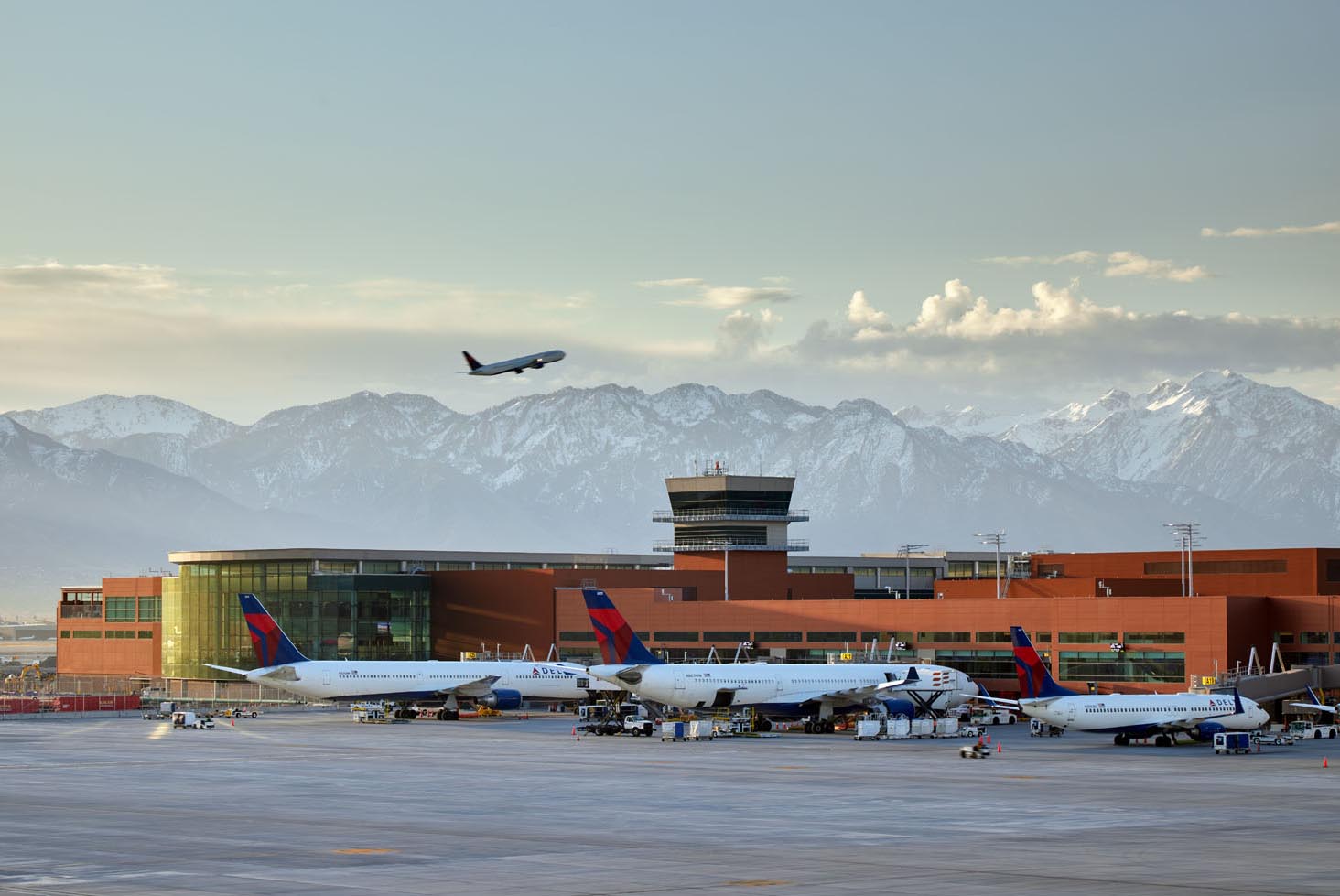
On a recent walk I encountered a neighbor who works at San Francisco International Airport and who, coincidentally, had just returned from a trip to Salt Lake City. Unsolicited—and without knowing our team had worked on the design—she announced it was one of the few airports in the world she had been to where she knew exactly where she was from the moment the plane touched down.
I had to smile, because at the heart of our design of the new Salt Lake City International Terminal Redevelopment Program was a desire to express the qualities of this incredible place.
From the beginning of the design process, the airport leaders forged a partnership with Delta Air Lines, their main carrier. When we asked about their aspirations for the new terminal, they both said the design should convey what makes Salt Lake City and the state of Utah so special in addition to the basic programmatic goals of a clear, intuitive flow, easy maintenance and a sustainable design.
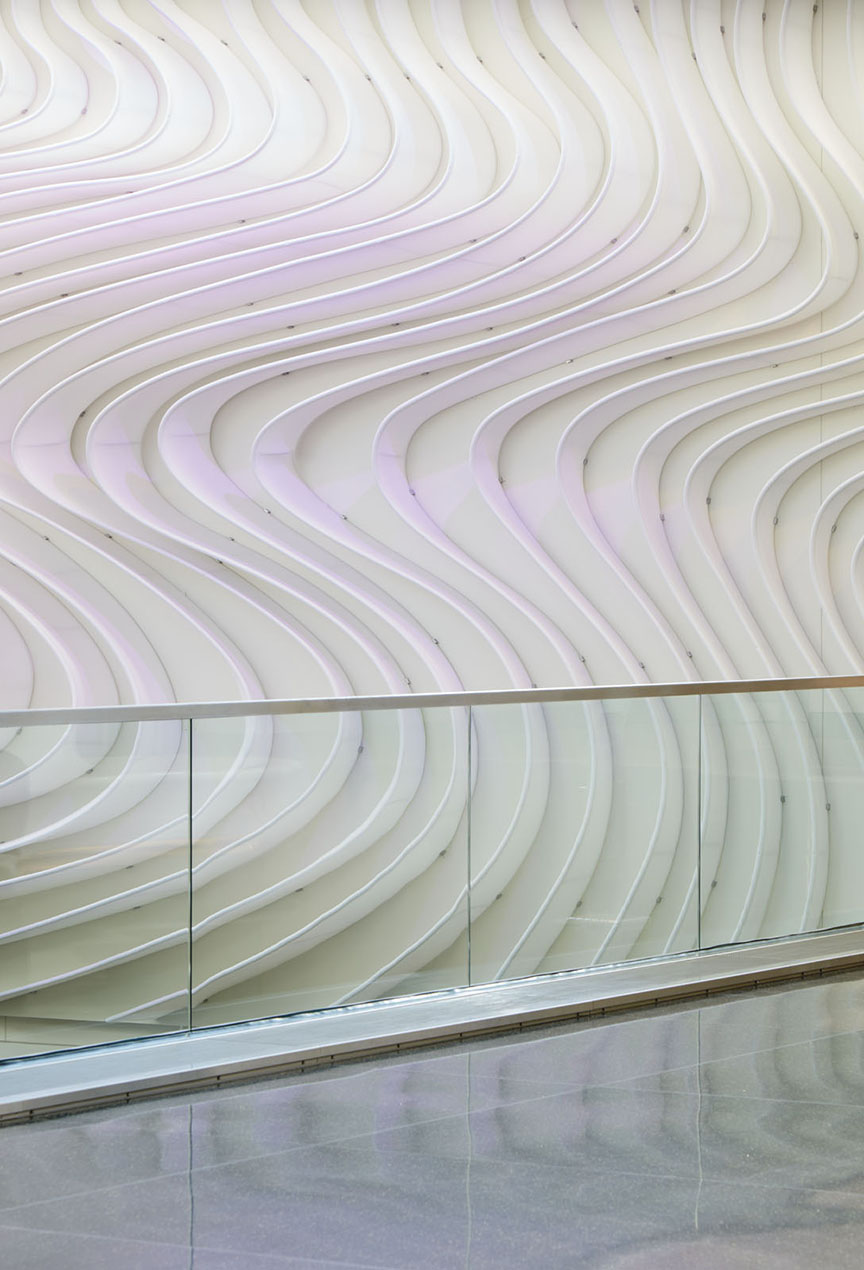
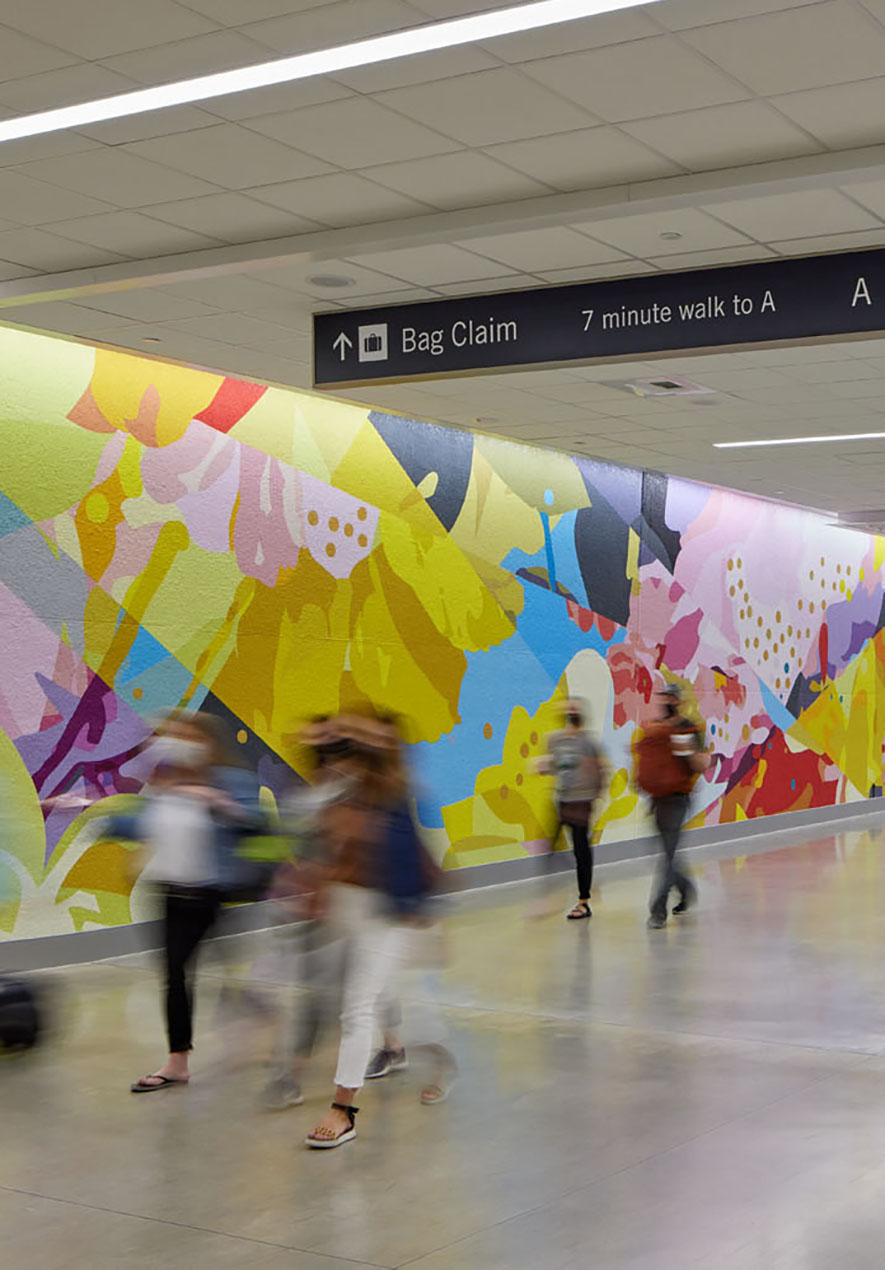
In our early visioning exercises we quizzed them about why they loved Salt Lake City. They spoke about the warm people and explosive growth. They described the brilliant hues of the sun and sky, the snow and skiing, the birds singing, the changing colors of the mountains from the darker greens and grays in the north to the fiery reds and oranges in the south. We listened intently as they told us what was in their hearts.
Our team translated feedback from these visioning sessions into design principles for the airport. The shapes, materials, colors and use of light emerged directly from Utah’s culture and natural beauty.
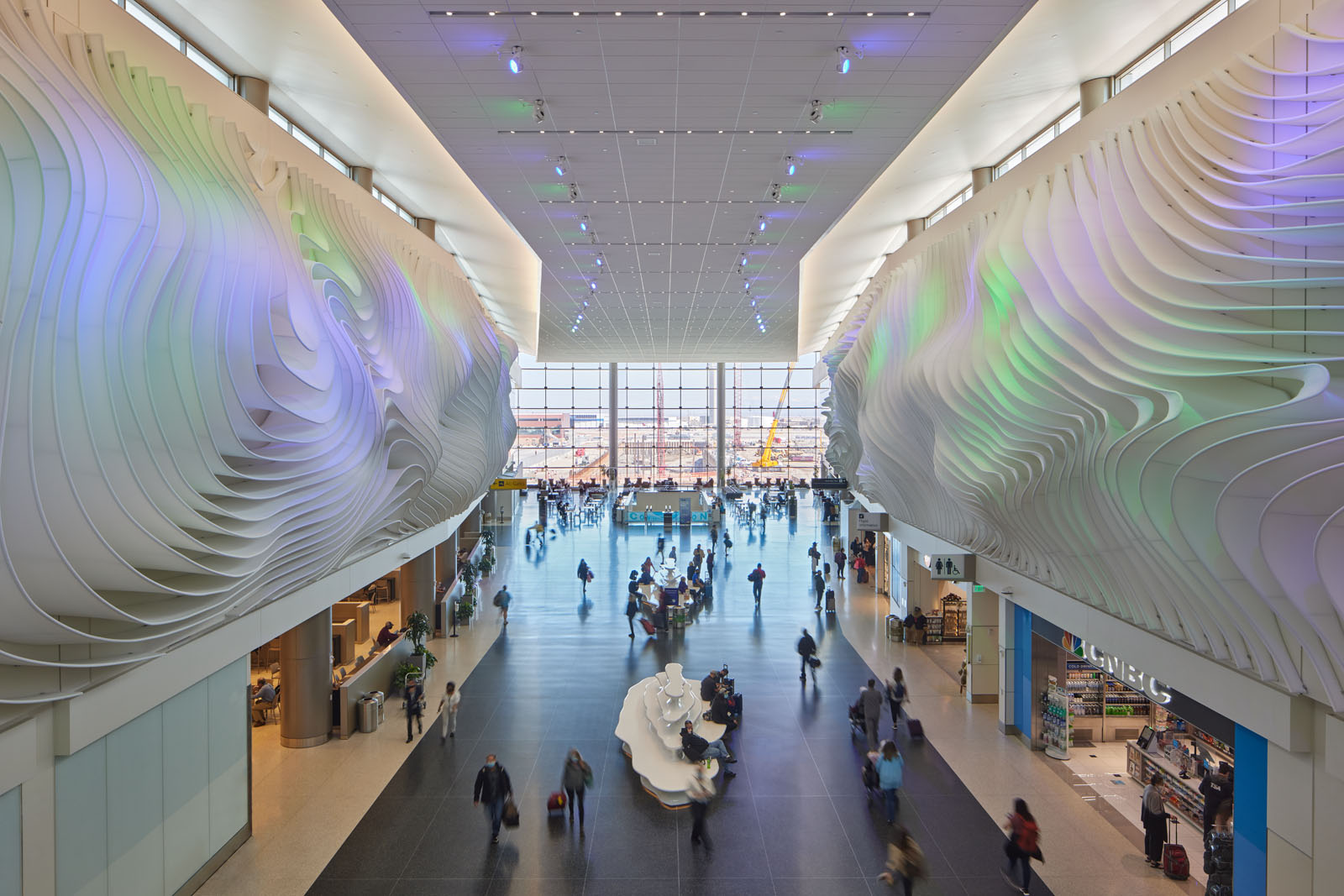
The main terminal supports the idea of passengers embarking on a transformative journey through “the Canyon,” a soaring interior atrium that runs the length of a football field and houses retail, food and beverage outlets, and security screening. Artist Gordon Huether created the wavy sculpture from hundreds of tensile membrane ‘fins’ that define the walls and mimic Utah’s dramatic red-rock canyons, alpine peaks, cottony white clouds and moving water.
As travelers wander through the Canyon, they enjoy views out 45-foot-high glass walls toward taxiing aircraft and Wasatch Mountains. Earth-toned, naturally derived finishes connect them to the western locale. Local restaurants and shops further emphasize that this is Utah.
A large clerestory atop the Canyon filters in daylight that changes the colors of the walls throughout the day. At night, a colored lighting system adds the same effect. Colors can be adjusted to reflect Utah’s changing seasons, holidays and special events.
Sustainable design was a priority for the airport’s leaders—and supports Utah’s image as a healthy place with a high quality of life. Sustainable design strategies include high-performance glazing, daylighting, energy-efficient mechanical and lighting systems, and an efficient configuration of terminal and gate locations that reduces fuel use and aircraft emissions.
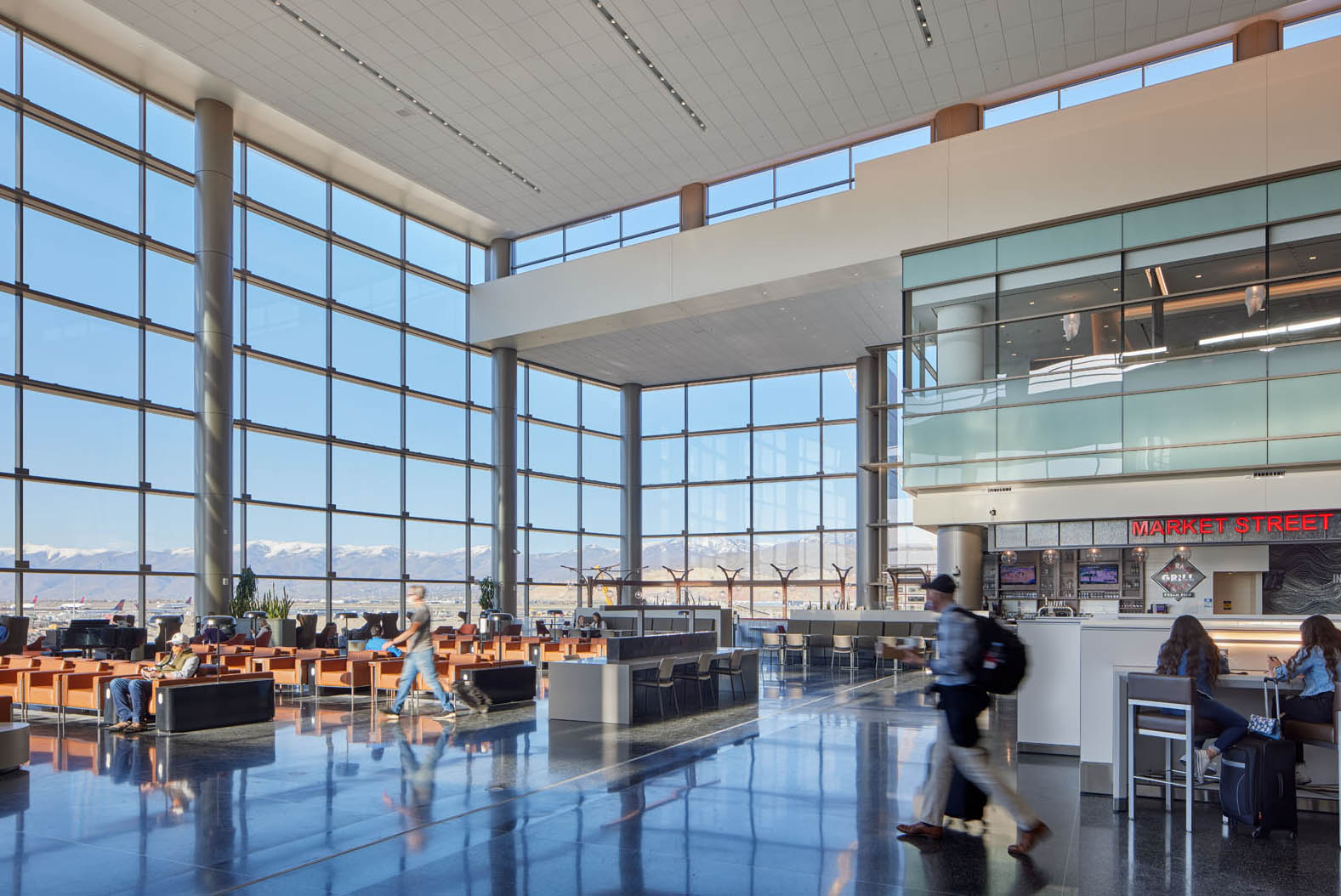
The entire Salt Lake City International Airport Terminal Redevelopment Program and the North Concourse West building—nearly two million square feet of space in total—both have been designed for LEED Gold certification.
Evoking the Pacific Northwest at Seattle-Tacoma International Airport (SEA)
The principles of designing for a definitive sense of place can be seen in terminals across the country. At Seattle-Tacoma International Airport (SEA), the natural splendor of the Pacific Northwest is on full display.
Earlier this year HOK’s team completed a visioning project to help the Port of Seattle set the stage for updating the main passenger terminal. In addition to informing the upcoming terminal renovation, the Port will incorporate the guiding principles from this effort into future new building projects.

The goal of this exercise was to help make Seattle-Tacoma International Airport stand out by setting clear guidelines that celebrate the region through design and exceptional passenger experience. Our sessions with airport leaders defined a vision of “a contemporary and timeless reflection of the Pacific Northwest’s natural beauty, innovative spirit and cultural influences.” This vision would be informed by simple and elegant forms, sustainable local materials and abundant daylight.
With our team still grounded from travel and working remotely because of COVID, we were able to do this visioning project virtually. This enabled the airport to save money while including more stakeholders in our conversations. The challenges included figuring out the best way to do the red dot-green/green-dot image exercises in a virtual setting and to catalyze the interpersonal interactions that often help generate creative ideas. Yet the project was a resounding success.
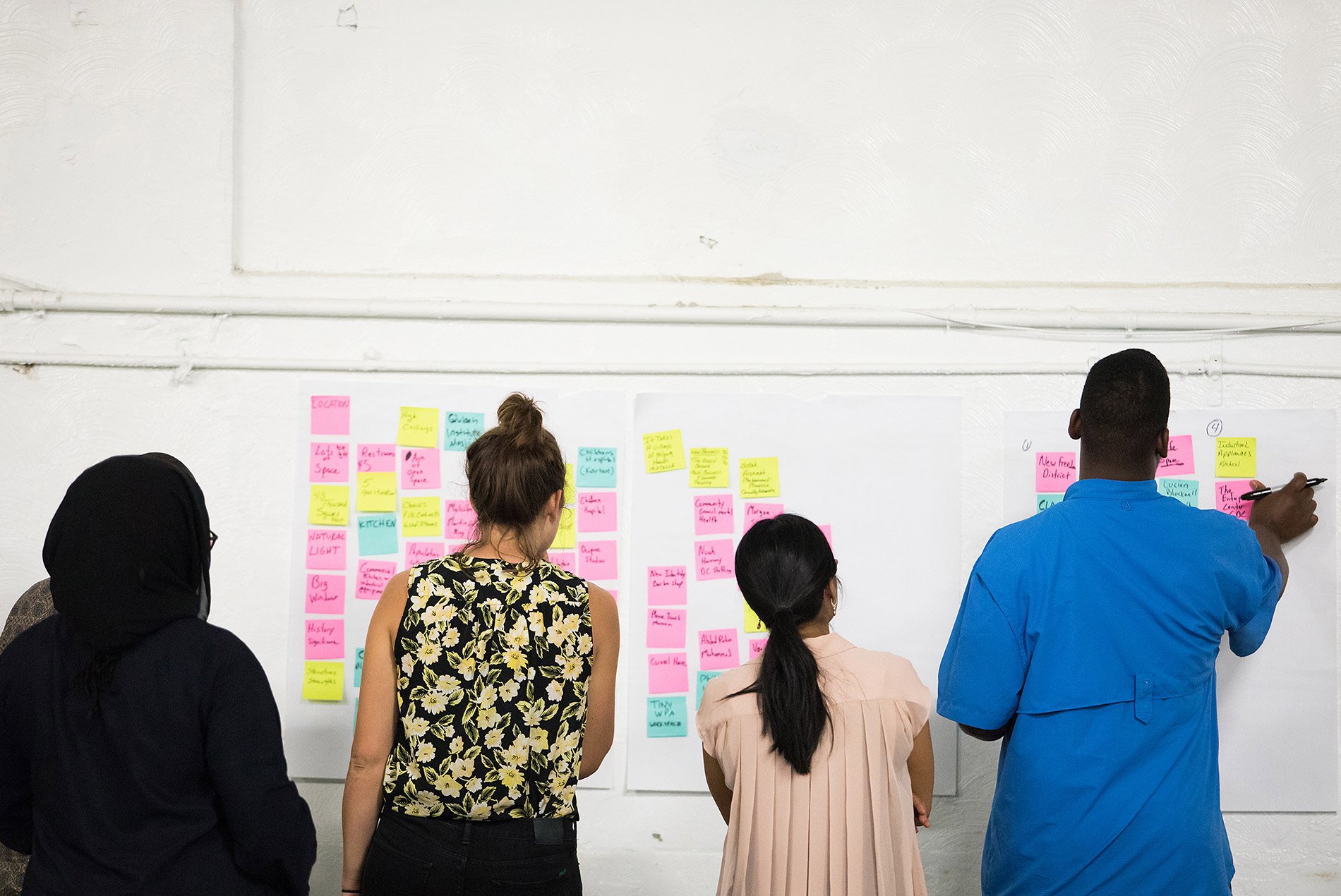
With the help of photos and virtual reality tools, the “power of place” drivers HOK explored with the Port of Seattle included:
- Inspiring, breathtaking, beautiful and memorable.
- Celebrate the places and natural beauty of the Pacific Northwest, highlighting the unique geographic features of the Washington coastline, gateways and places.
- Welcoming open space with abundant daylight.
- Clear and intuitive wayfinding through integration of architectural forms and materials, signage and art.
- Provide a calming space with focus on passenger and employee wellness.
- Holistic marriage of function, architecture, art, technology and connections to nature.
- Clean, simple and elegant design.
- Balance sophistication of world-class space with playful moments.
- Integrate memorable moments throughout the passenger experience that support intuitive wayfinding (and Instagram/selfie moments).
- Craftsmanship and detailing (quality, timeless Pacific Northwest materials).
- Materials that reinforce connections to the region through layering of textures and colors.
- Balance of materials through layering of textures and colors.
- Integration of biophilic and sustainable design principles through selection of materials and variations in light, texture and scale of spaces.
- Integration of technology to reflect innovative nature of region (state-of-the-art terminal celebrating the joy of flight).
- Seamlessly integrate retail and airline tenant spaces and signage.
“Our vision is to capture the essence of the Pacific Northwest within the spaces of the airport,” said Lance Lyttle, managing director of SEA Airport. “This will be a guide for the next 30 years, to set the stage for innovative planning of intuitive spaces that welcome passengers as a true memorable and iconic gateway to our region.”
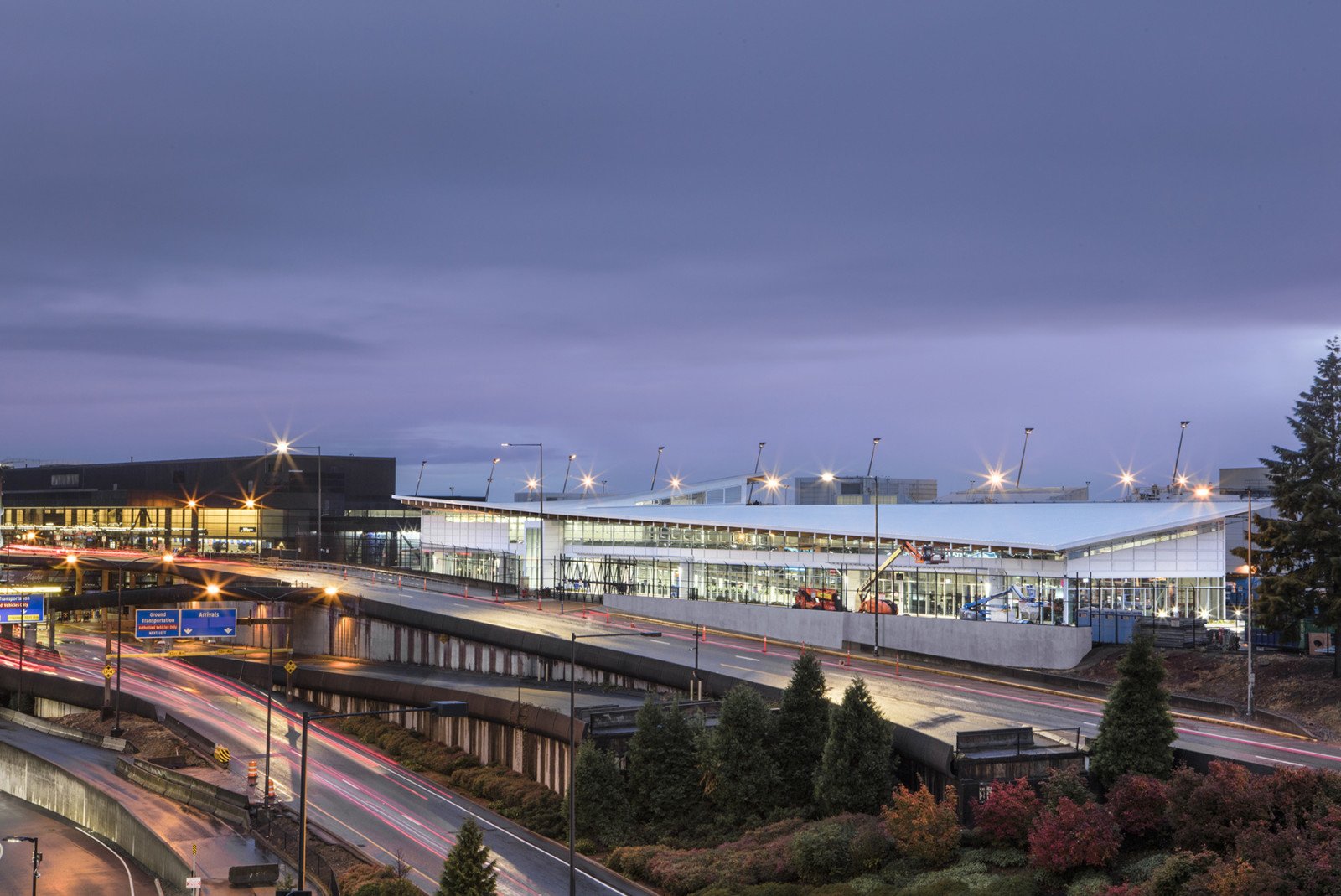
SEA Concourse D Annex
Several years before these guidelines existed, the question for our team designing the Concourse D Annex, which opened in 2018, was how to bring the Pacific Northwest sense of place to a relatively small (32,400 square feet) building with a modest construction budget and a predetermined palette of concrete, steel, white metal panels and wood.
The image of the Great Blue Heron, the official bird of Seattle and one of the most recognizable birds in Washington, inspired a simple concept evoking the elegant movement of flight.
Expressive structures are common at Seattle-Tacoma International Airport, and wood structures are ubiquitous across the Pacific Northwest. But it’s rare to see an expressive wood structure at an airport.
Our design team collaborated with structural engineers at Lund Opsahl, LLC, and design-build partner, The Walsh Group, to devise a distinctive long-span, glue-laminated (glulam) timber-and-steel truss system constructed from locally sourced Douglas fir trees. Wood beams honored and enhanced the local design aesthetic while reducing the building’s embodied carbon.
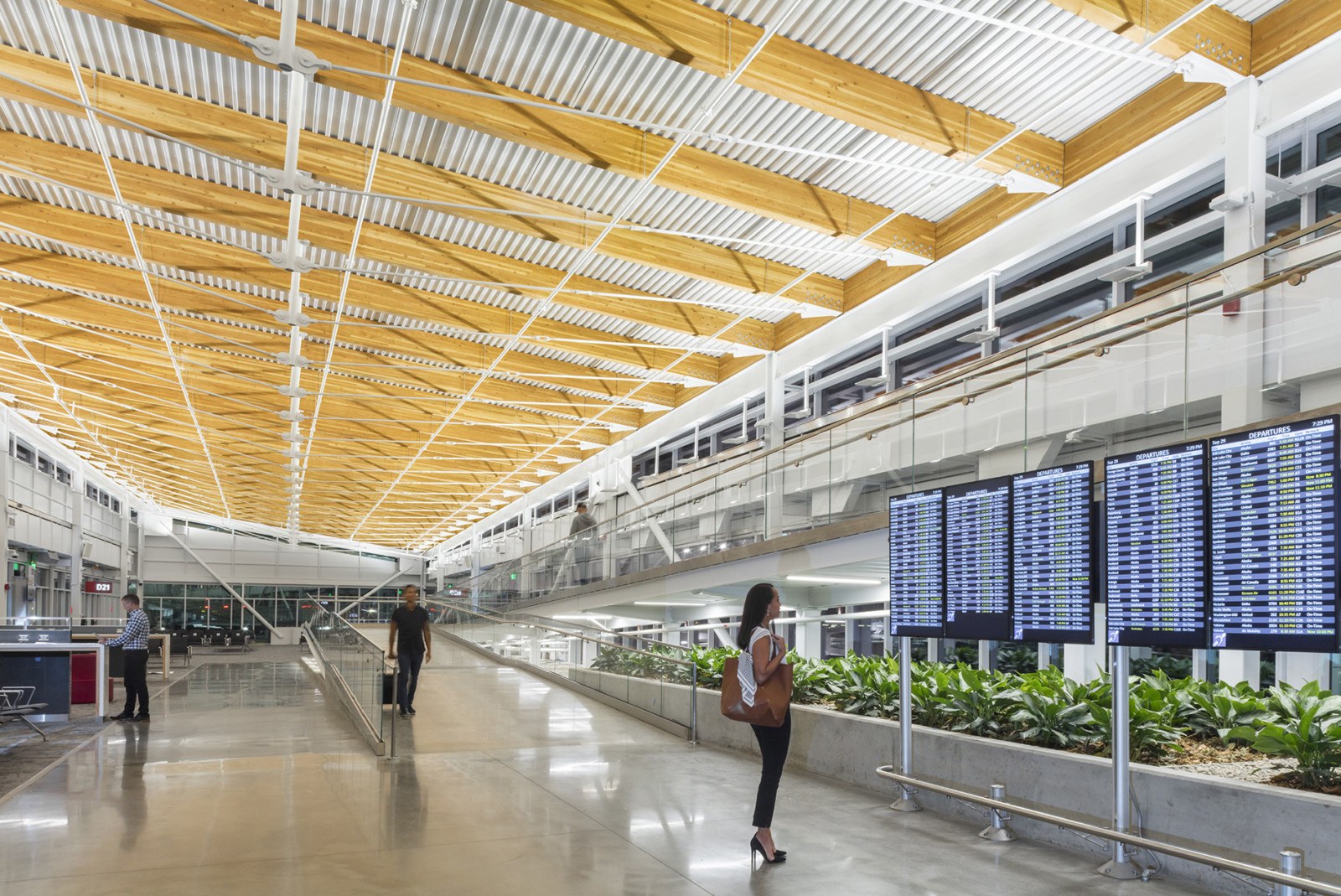
The two-story, column-free interior space feels open and easy to navigate with its light color palette, sustainable finishes and clear circulation. The open plan allows for intuitive wayfinding and clear paths of travel. Glass curtain walls draw in daylight and connect passengers to the outdoors.
We won’t claim that the Starbucks adds to the Seattle vibe. But we have noticed that the natural light and comfort that comes from the design details attract passengers from other parts of the airport. They seek it out to have a coffee or meal, read or just soak in the Pacific Northwest ambiance as they wait for their flight.
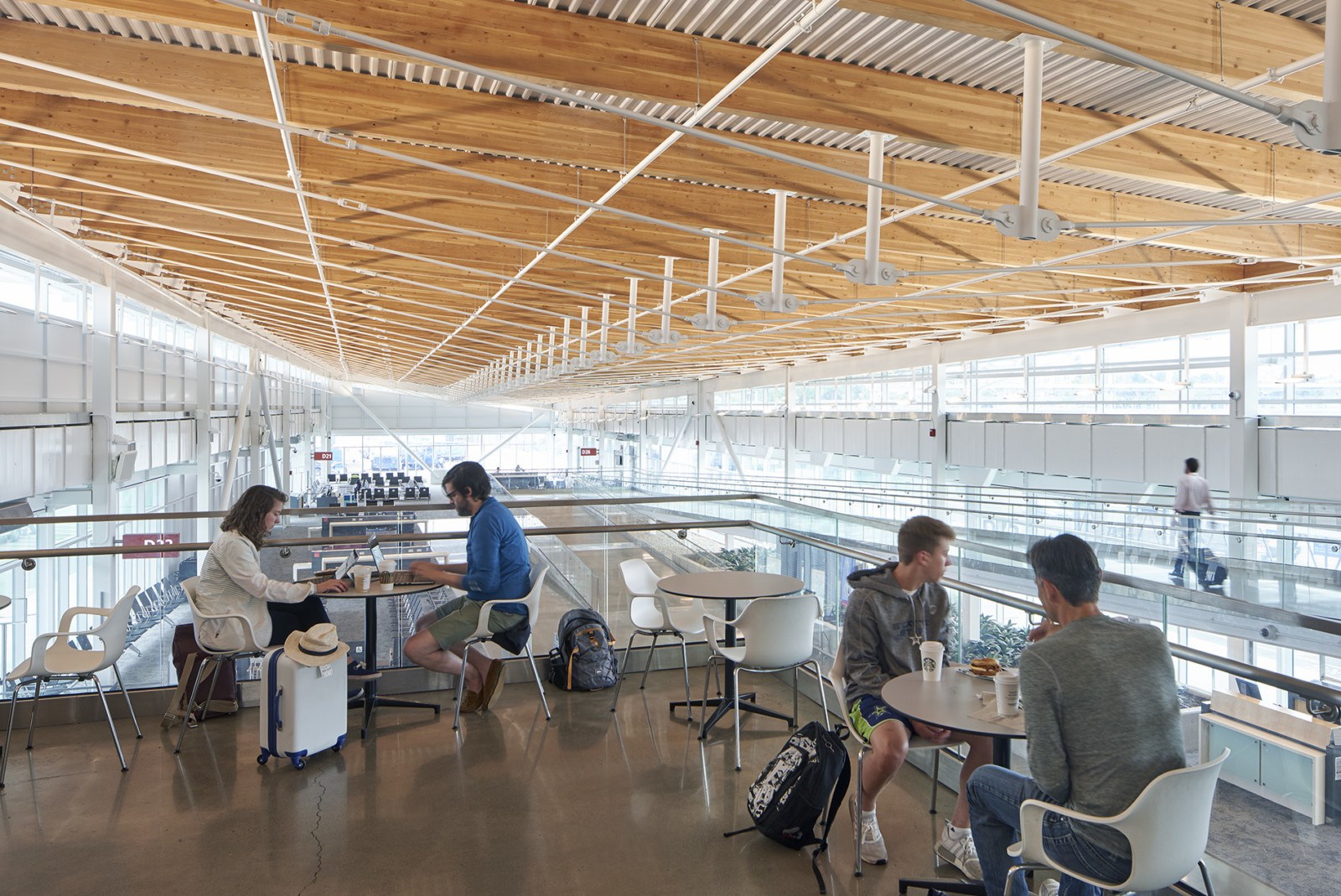
The Annex was the first U.S. airport terminal building to achieve Silver certification through the USGBC’s LEED v4 for Building Design and Construction. The building’s glass and metal skin maximizes interior natural light while minimizing glare, heat gain and energy loss.
Using virtual reality enabled our team to take our Port of Seattle clients on a tour of a robust 3D model of the new hardstand building before construction ever began. This helped them understand how the Annex would look, feel and function, which helped inform their decision making.
The SFO Connector
We’re designing a new Connector building that will link Terminal 2 and Terminal 3 at San Francisco International Airport. This project, which should be substantially complete by late 2021, is updating the pre-security connector, adding a new post-security secure connector and constructing a 6-story office building above the passenger level. This new post-security link will enable passengers to walk from T2 and T3 to International Terminal G without exiting security for the first time.
The design creates a beautiful jewel box with sculpted links to T2 and T3. To make the Connector feel like part of the SFO “neighborhood,” interior materials reference those in other airport buildings. There also are paintings and sculptures by Bay Area artists.
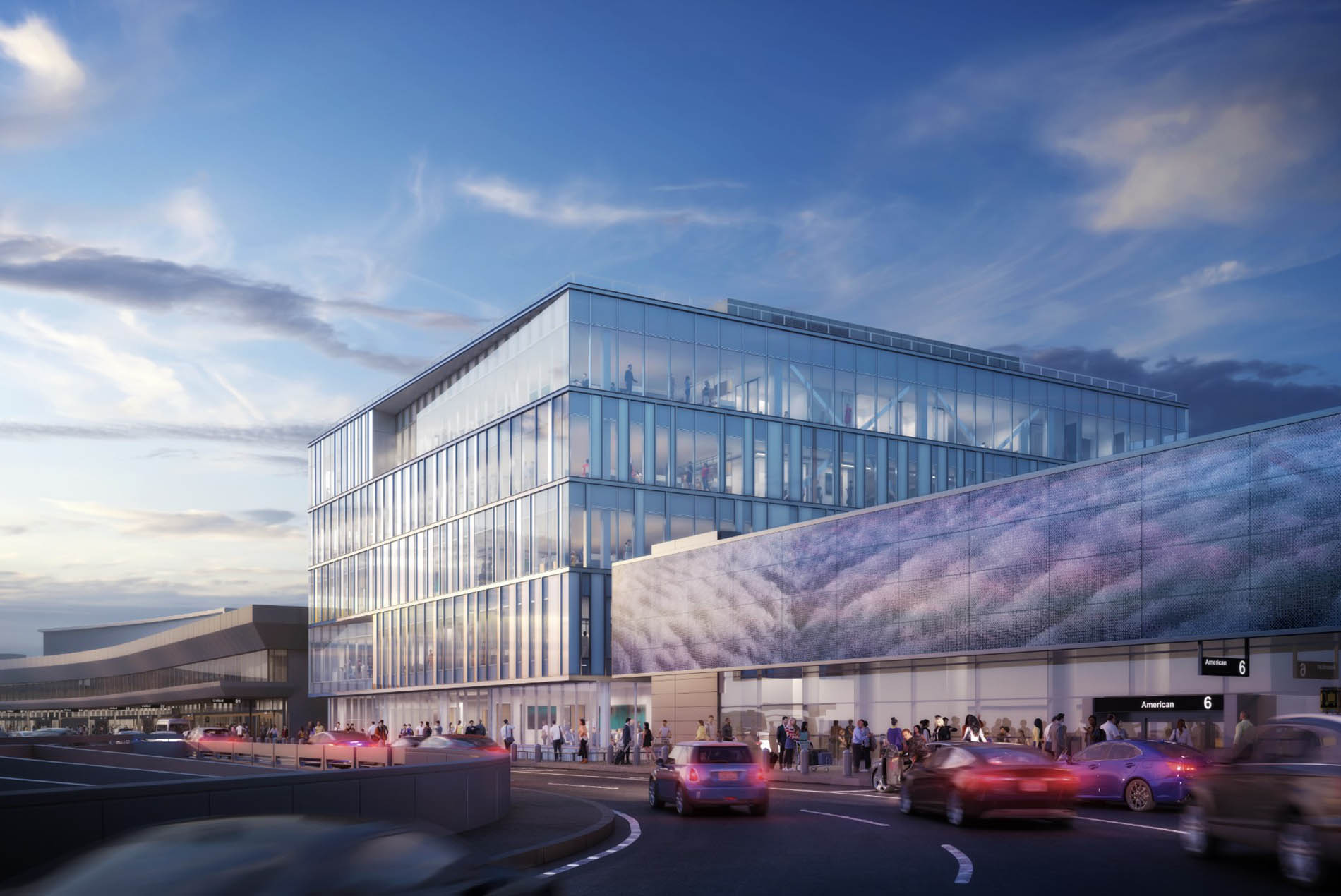
Emulating how the waves of silvery fog rolls across the Bay Area’s hills, the building steps back at its lower and upper levels. On the top level “carve-back,” SFO’s employees have access to an airside balcony with 360-degree views of the airport, the Bay and San Francisco.
In line with SFO’s sustainability objectives, HOK’s team has designed the building for LEED Gold and WELL Building certification.
Making Places: Destination Airports
Here are other recent examples of how HOK’s design teams have brought a sense of the local personality and place into airports.
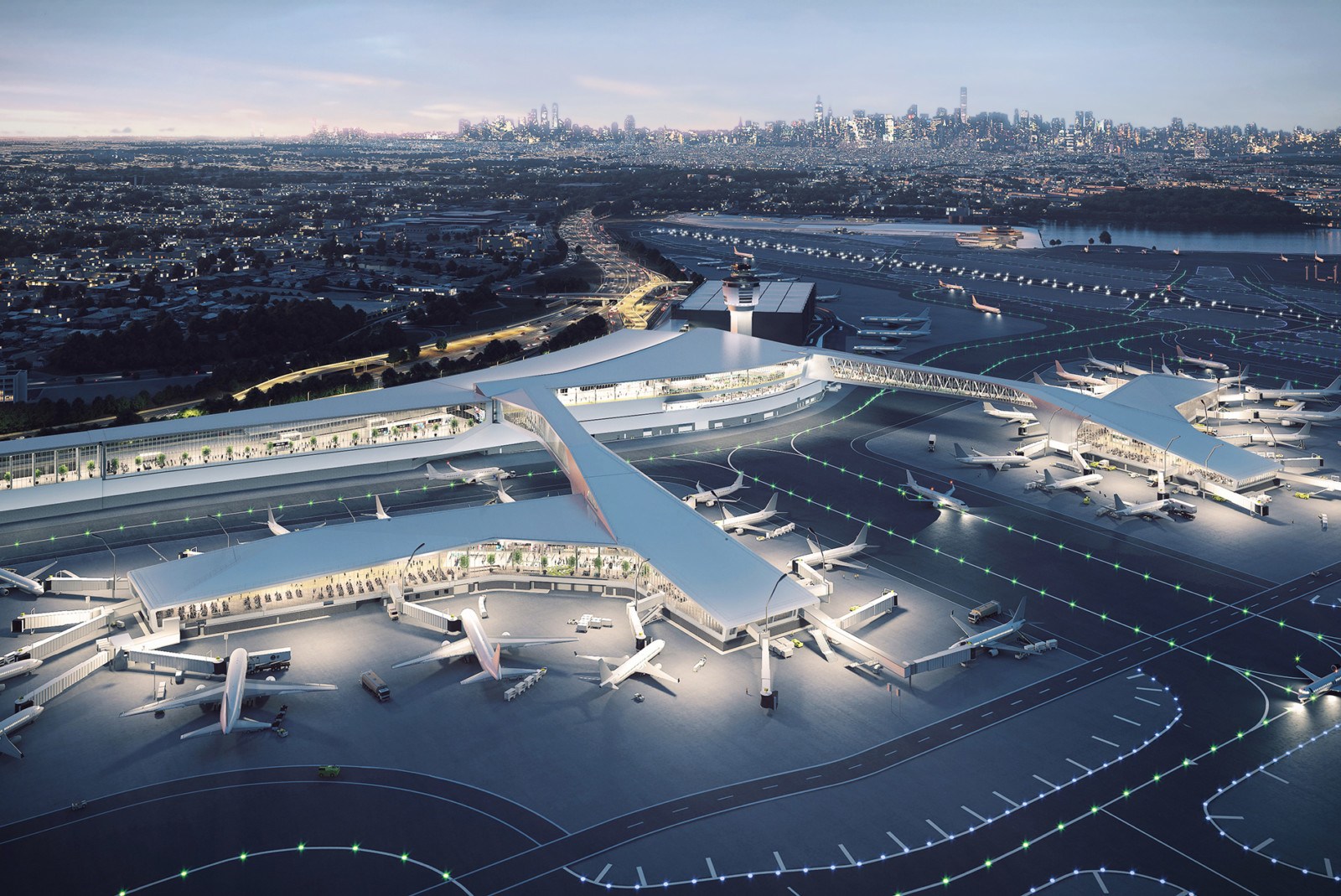
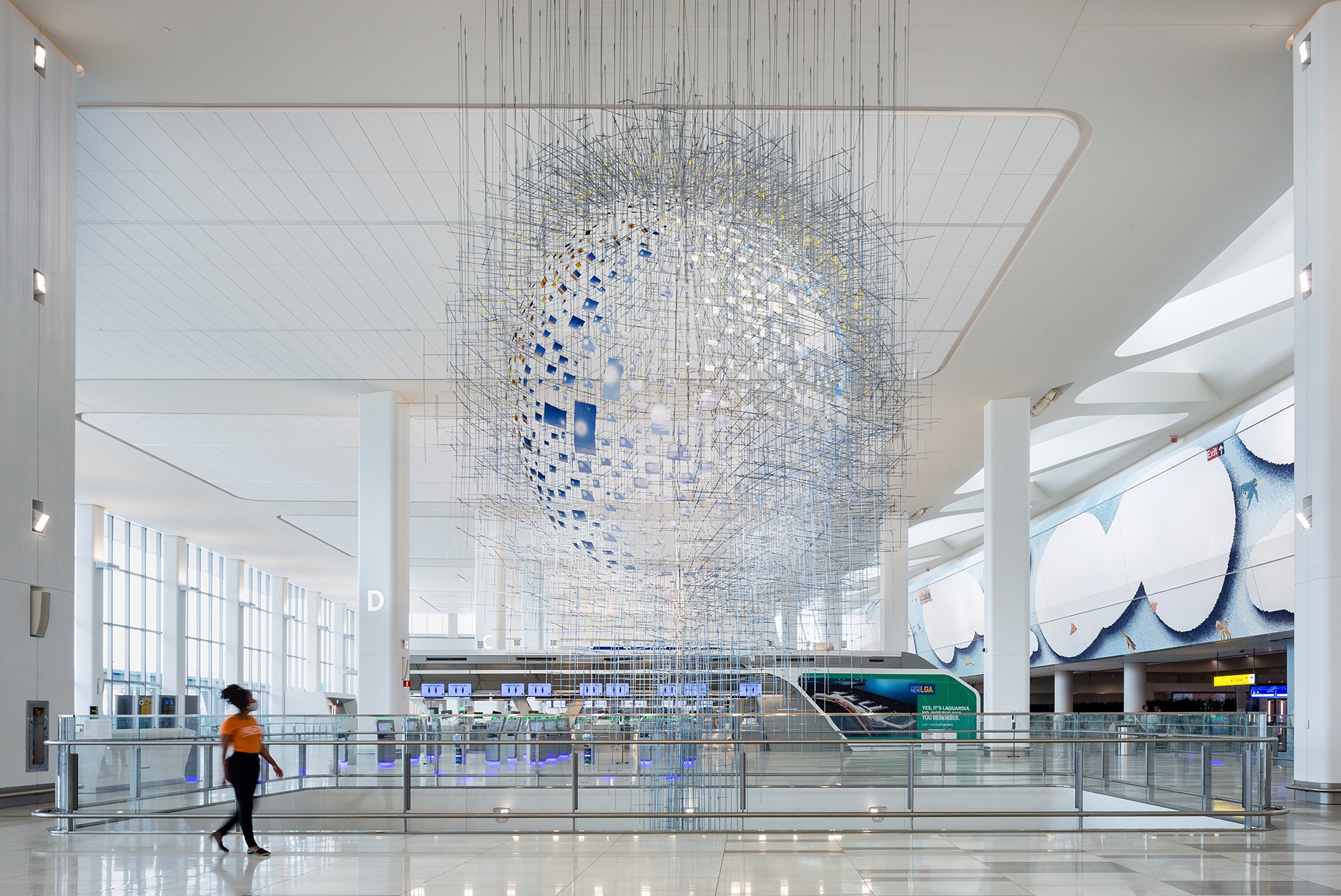
At LaGuardia Airport’s New Terminal B (above), the two island concourses are accessed from the main terminal through two pedestrian bridges. This provides an apt metaphor for New York, a city of islands and bridges.
Retail and dining neighborhoods beyond the TSA checkpoint include offerings from New York originals such as Bowery Bay Shops, Brooklyn Diner, Gotham Newsstand, FAO Schwartz and Shake Shack. An outdoor dining area offers dramatic views of Manhattan.
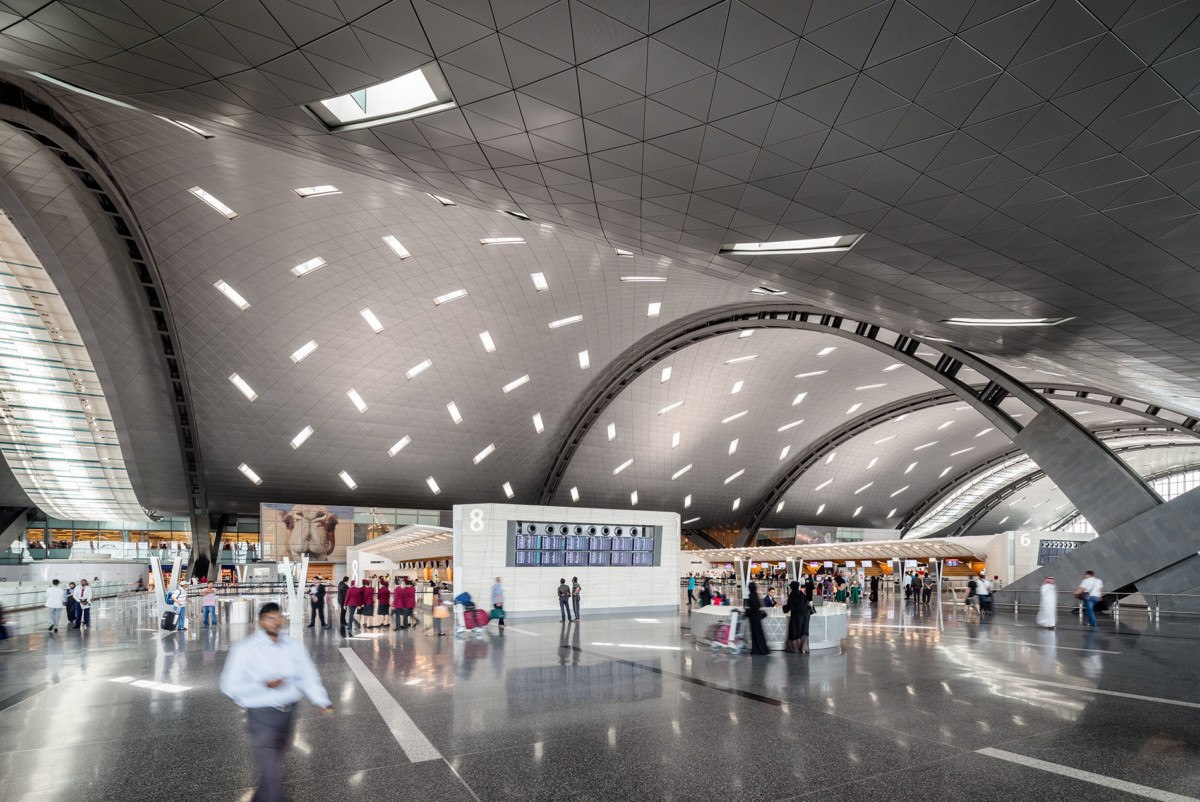
The architecture, structure and art of Hamad International Airport’s Passenger Terminal (above) come together to convey a sense of the beautiful country of Qatar.
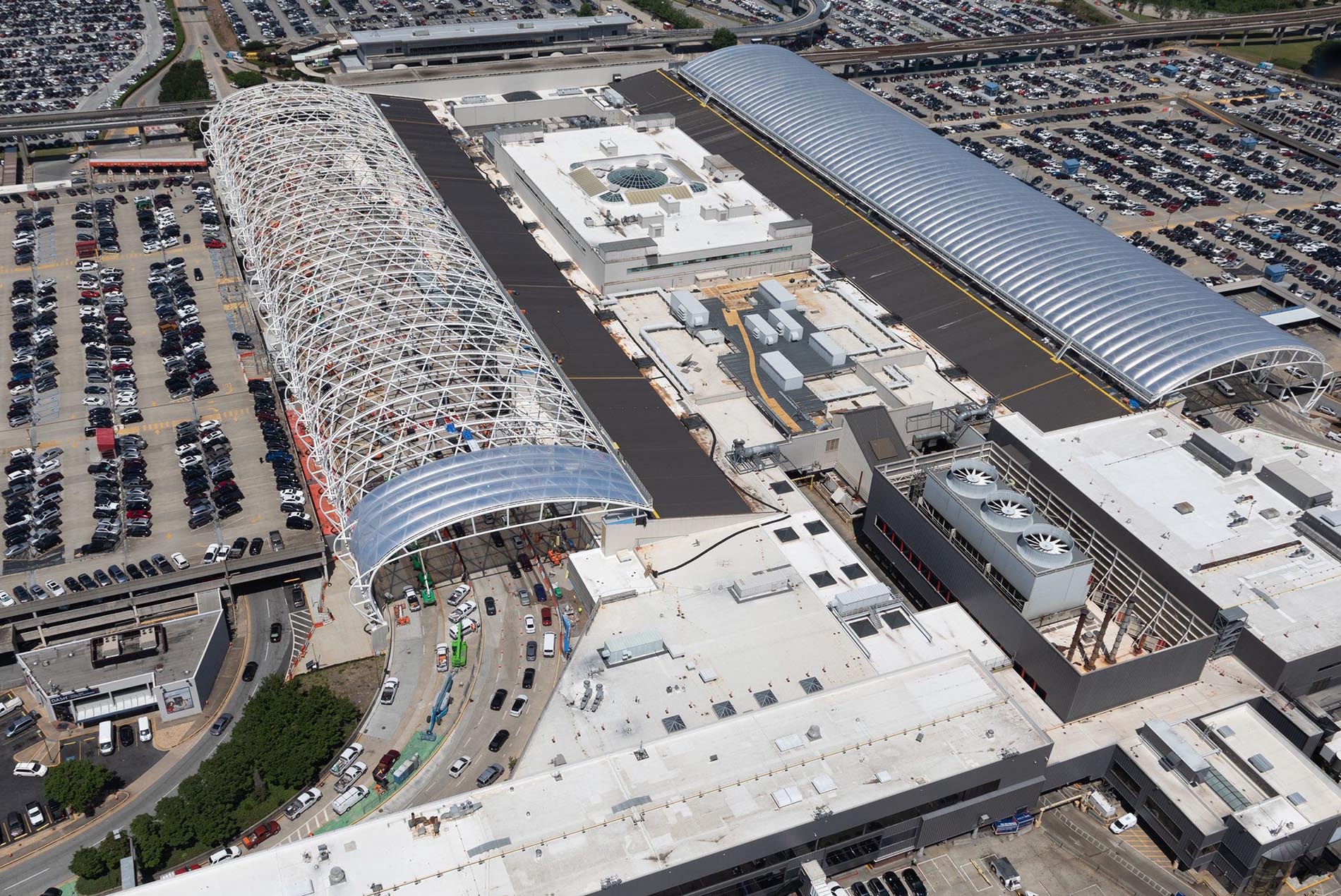
The iconic structural canopies at Hartsfield-Jackson Atlanta International Airport (above) leave an indelible impression on travelers, who know they can be at no other airport in the world.
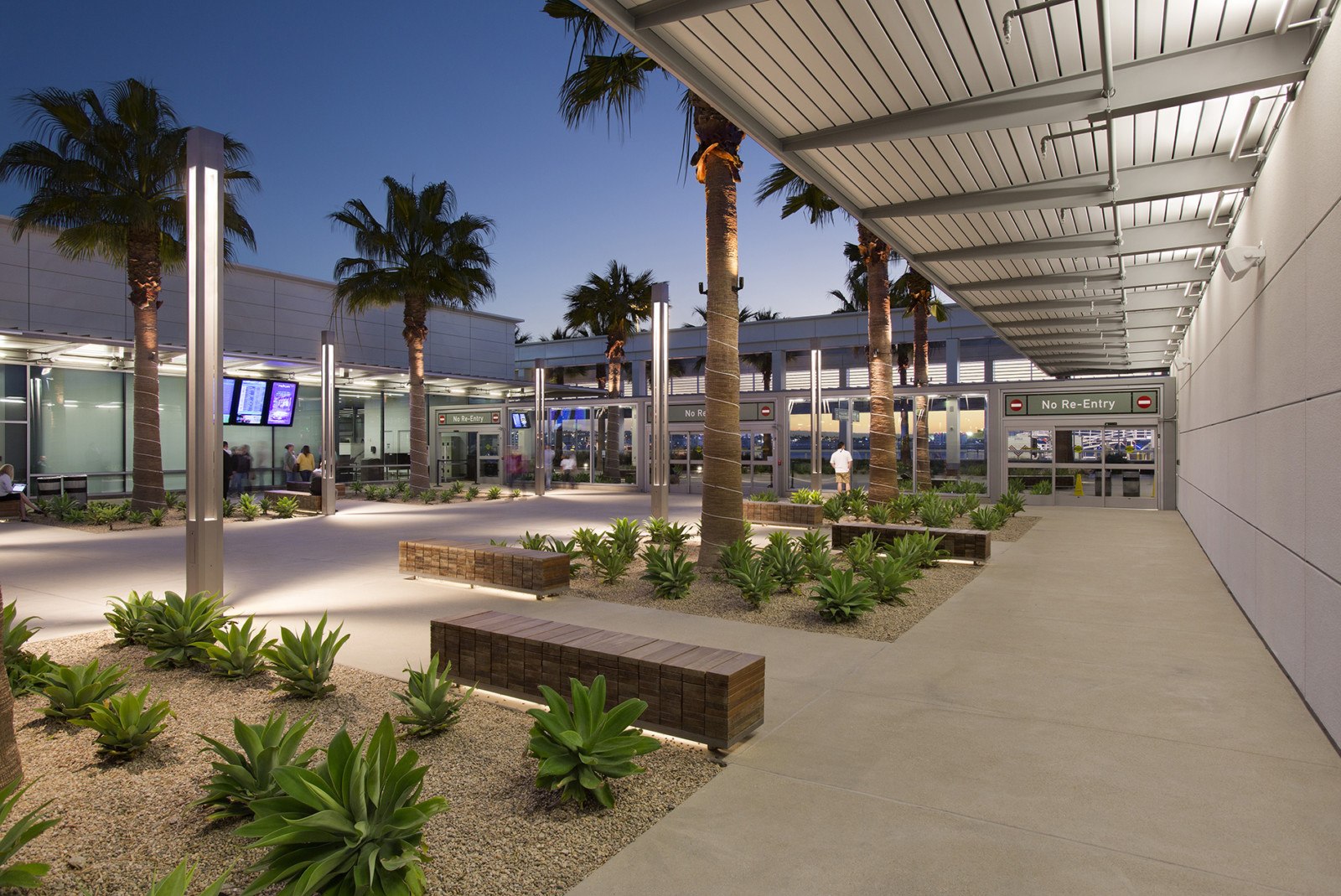
The outdoor spaces at Long Beach Airport (above) accessible past security are rare for airports but feel right at home in Southern California.
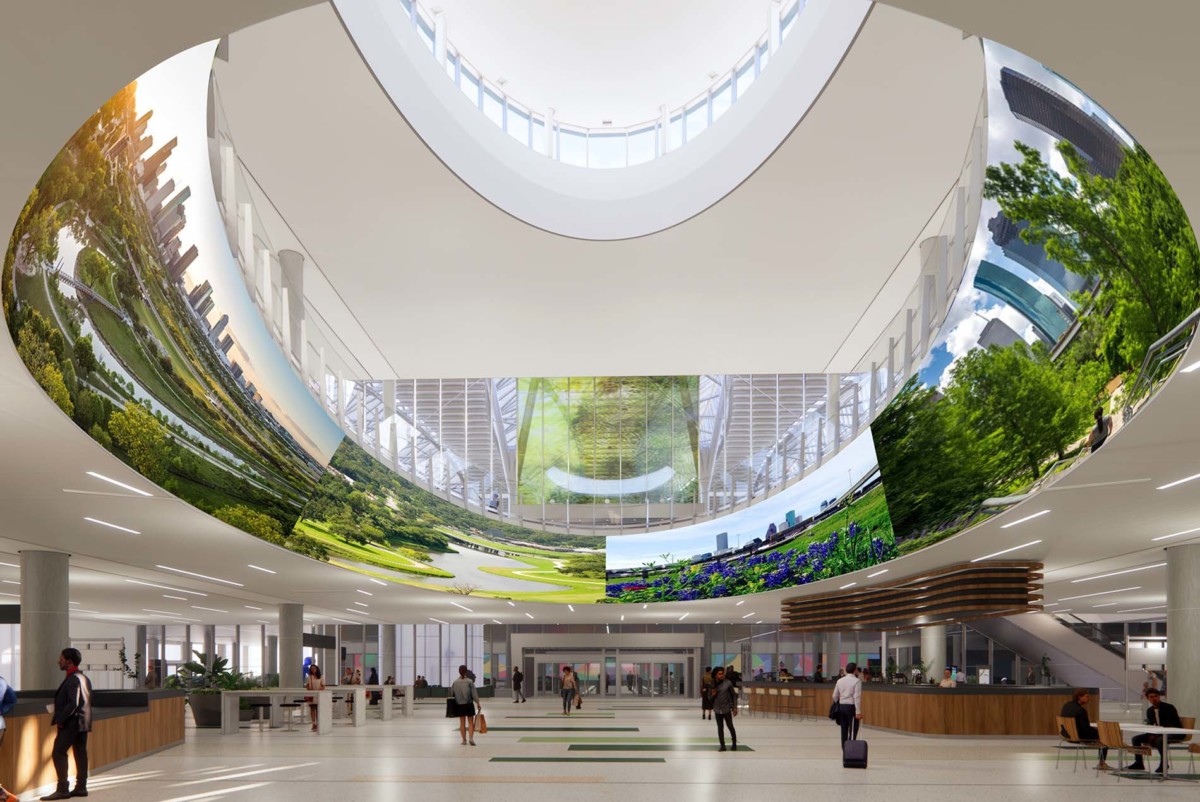
At the new George Bush Intercontinental Airport Federal Inspection Services Building in Houston (above), exiting passengers will pass through images of Houston’s welcoming live oaks and park settings.
The stories our airport terminals tell about a place through design are passed on to travelers who become the storytellers who spread the lasting impressions of a place. If they’re arriving in a place, they should know they can be in no other. If they’re leaving, they should want to come back soon—and feel compelled to inspire their friends and relatives back home to do the same.
Have questions about designing for a definitive sense of place in airports or want more information on the case studies presented? Contact the author, Alan Bright. Alan is a design principal based in San Francisco with extensive experience designing thoughtful, sustainable solutions for aviation clients worldwide.